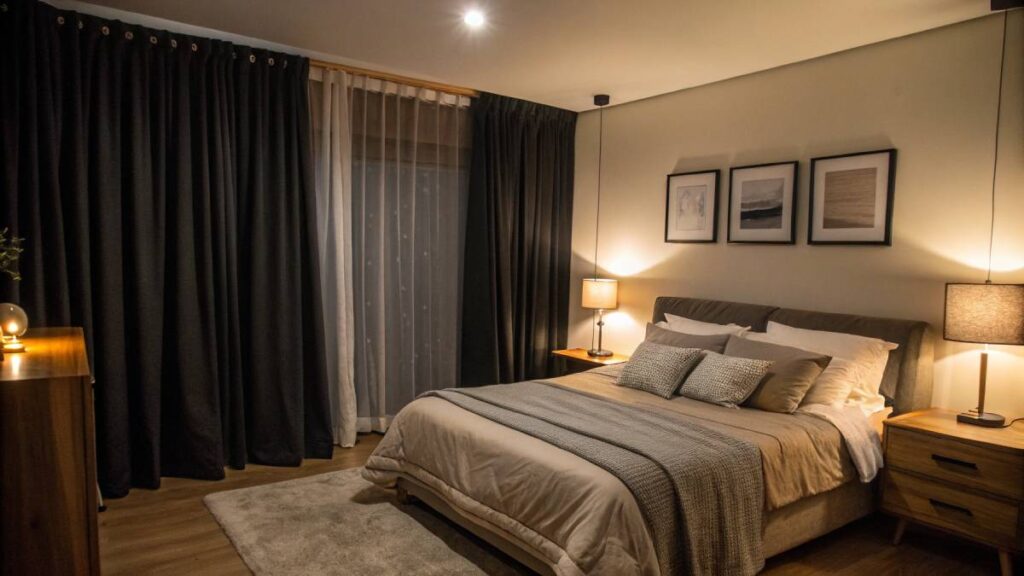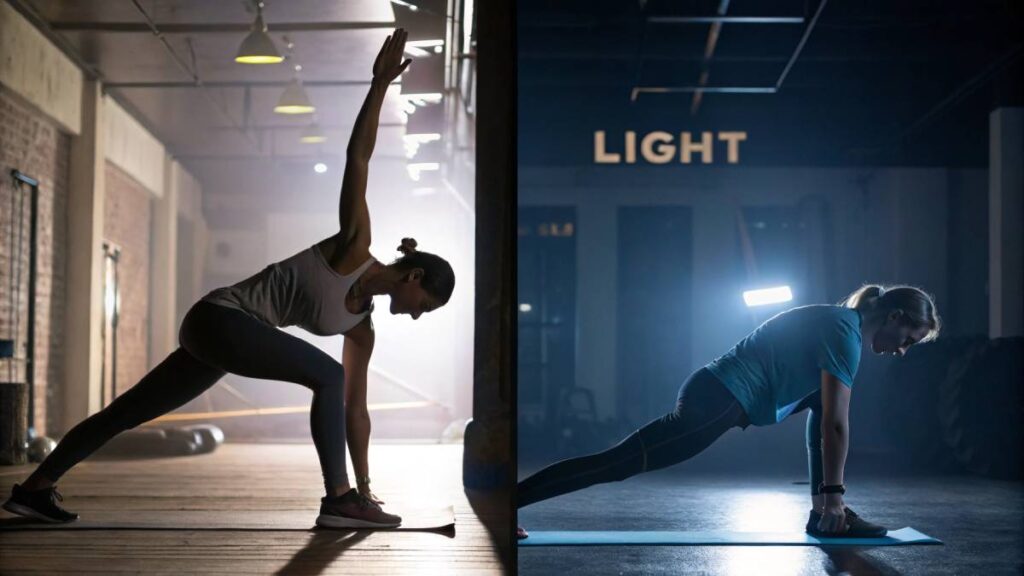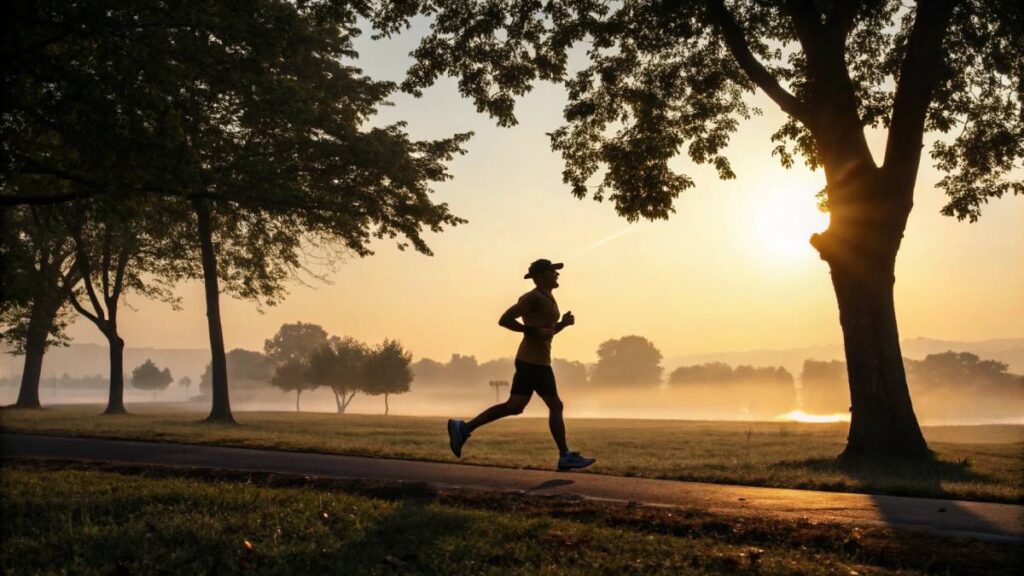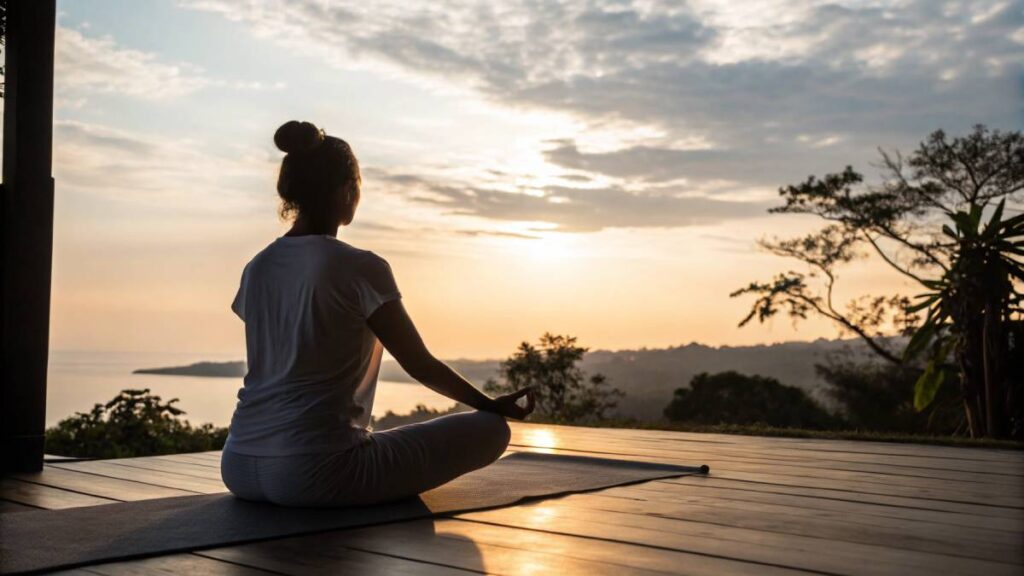Struggling to fall asleep or wake up refreshed? The answer might not lie in another cup of coffee or endless sleep aids but in your workout routine. Exercise isn’t just for achieving fitness goals; it’s a secret weapon for improving sleep. The magic of movement lies in its ability to tire your body out, balance hormones, and regulate internal rhythms, setting you up for a restful night. Curious how the timing, type, and intensity of exercise influence dreamland? Dive in to learn how to fine-tune your fitness routine to unlock the ultimate snooze benefits.
Key Takeaways
- Exercise Improves Sleep Quality: Physical activity extends deep sleep cycles, reduces midnight disturbances, and tackles insomnia symptoms.
- Timing Matters: Morning or afternoon workouts regulate your internal clock, while evening sessions should be low-intensity to avoid disrupting rest.
- Exercise Type Impacts Rest:
- Aerobic Exercise: Enhances overall sleep quality and combats sleep apnea.
- Resistance Training: Reduces nighttime awakenings and builds strength synergistically with sleep.
- Mind-Body Exercises (Yoga, Tai Chi): Slash stress for a smoother sleep transition.
- Moderation is Key: High-intensity sessions improve deep sleep but should be done earlier in the day. Find a balance that works for your body.
- Create a Sleep-Friendly Environment: Optimize your bedroom with cool temperatures, low lighting, and zero chaos for maximum rest.
Getting the Scoop on Exercise and Sleep
How Exercise Changes Your Sleep Game
Exercise does wonders for your snooze time and keeps you feeling great. Getting physical doesn’t just zap calories; it sets off a chain reaction that leads to better sleep all around.
- Pump Up the Sleep Need: Working out tires you in a way that makes bedtime way more appealing. Spend energy by day, and you’ll find it easier to drift off come night.
- Hormone Party: When you move, your body balances sleep-promoting hormones like melatonin and stress-busters like cortisol. More melatonin helps you sleep, while less cortisol means less stress.
- Temperature Trick: Your body heats up after exercise, but as it cools down later, that’s your body giving the nudge to hit the hay.
- Feel Good Vibes: Those post-workout endorphins are like mini mood boosts, chasing away anxiety and gloom, setting you up for a cozy night’s sleep.
“Sleep and exercise are intricately linked; committing to one improves the other,” says Dr. Matthew Walker, leading neuroscientist and author of ‘Why We Sleep.’
What Affects the Exercise and Sleep Combo
Exercise is great for sleep, but some things can make or break how well it works:
- When You Sweat Matters: Going hard in the gym earlier in the day seems to help sleep better than winding down with a nighttime session.
- Exercise Style: Whether you’re doing cardio, pumping iron, or chilling out with yoga, each brings its unique sleep perks. Check out more on yoga for sleep if you’re curious about the calm yoga can bring to bedtime.
- How Intense is Too Intense: Breaking a good sweat with moderate exercise is usually a win for sleep, but going all out too close to bedtime? Not so much.
- You Do You: Everyone’s different—your age, fitness level, health, and personal sleep quirks mean how you react to exercise will vary. Finding what works for you can make all the difference.
| Exercise Type | Best Done When | Sleep Impact |
|---|---|---|
| Aerobic Exercise | Morning/Afternoon | Awesome |
| Resistance Training | Morning/Afternoon | Good |
| High-Intensity | Morning | Hit or Miss |
| Yoga/Mind-Body | Evening | Excellent |
Mixing and matching your workouts with sleep in mind can maximize those dreamy benefits. For more insights on boosting sleep quality, go ahead and check out our piece on sleep hygiene.
Figuring out how to blend exercise and sleep doesn’t have to be a head-scratcher. Get the balance right, and you’re set for some sweet, rejuvenating slumber. Want more tips? Check out our guide on sleep and fitness balance.
Benefits of Exercise for Sleep
Heading to the gym or just a walk in the park? Your choice! Moving your body not only boosts your mood but also tucks you in at night for a cozy snooze. Let’s peek into how breaking a sweat can amp up your sleep game, zap those insomnia blues, and set your snooze schedule straight.

Improved Sleep Quality
Exercise isn’t just about sweating buckets; it’s like a lullaby for adults readying you for dreamland. It stretches the twilight time in dreamland, your deep sleep. This phase is your body’s janitor, cleaning up, fixing torn muscles, and winding down stress. People who are up and about often find themselves less bothered by midnight disruptions and sleep like babies.
| Activity Level | Hours of Deep Sleep per Night |
|---|---|
| Couch Potato | 1.5 – 2 |
| Kinda Active | 2 – 2.5 |
| Energizer Bunny | 2.5 – 3 |
For ways to make your bedroom a sleep haven, hop over to our article on bedroom optimization for sleep.
Reduced Insomnia Symptoms
Got sleepless nights? Move it! Being active acts like nature’s own sleep potion. Splashing a little sweat in your day can reel in those runaway insomnia symptoms. Exercise cuts down anxiety and bad vibes—a major sleep stealer—making your nights trouble-free and protecting your morning from the yawns. Check out this table to see how sweat works its magic:
| Insomnia Symptoms | Before Exercise | After Lacing Up |
|---|---|---|
| Falling Asleep | Annoying | No Biggie |
| Midnight Stirring | A Lot | Barely Any |
| Dragging Through the Day | Ugh! | Breezy |
For homegrown tips to tackle insomnia, peek into our article on natural sleep aids.
Regulation of Sleep Cycles
Flex those muscles and your sleep cycle too! Regular moves help balance your internal sleep clock or whatever nerdy name they give it. Sunlight during outdoor activities locks your rhythm, resulting in predictable sleepy vibes and ensuring you hop outta bed sprightly.
| Type of Exercise | Impact on Body Clock |
|---|---|
| Morning Jogs | Boosts Wake-Up Time |
| Afternoon Pushups | Calms the Evening Vibes |
| Chill Evening Yoga | Sleep Countdown |
Jump into our article on sleep cycles for pointers on taming your sleep rhythm.
So, next time you’re tempted to slump on the couch, remember: an active lifestyle isn’t just good for toning muscles but for scoring that dreamy sleep. For insight on syncing exercise with sleep-friendly habits, slide over to our article on sleep hygiene.
Timing Your Workouts for Better Sleep
Finding that sweet spot in your schedule for a workout can make your sleep as golden as a caramel latte on a crisp morning. Here’s how different exercises can tuck you in for a better night’s rest and when to lace up those sneakers for the biggest snooze benefits.

Effects of Different Types of Exercise on Sleep
Not all workouts are created equal when it comes to hitting the hay. Let’s break down how different exercises can influence your sleep dreams.
| Type of Exercise | Effect on Sleep |
|---|---|
| Aerobic Exercise | Boosts the quality of sleep. You’ll drift off faster and enjoy deeper, dreamland sessions. |
| Resistance Training | Helps with muscle recovery, bounds to tackle insomnia like a pro wrestler. |
| Mind-Body Exercises (like yoga or tai chi) | Shrinks stress, paving a quicker route to dream city. Wanna stretch it out? Check our yoga for sleep article. |
Ideal Exercise Timing for Improved Sleep
It’s not just about what you do, but when you do it. The clock can make or break your sleeping groove.
| Time of Day | Benefits for Sleep |
|---|---|
| Morning | Jumpstart your sleep cycle! Mornings got your back for regular sleep patterns. Perfect for folks battling insomnia or those with screwy schedules. |
| Afternoon | Need to cool down by bedtime? Get moving in the afternoon for a sweet temp drop that’ll cradle you to sleep. |
| Evening | Keep it calm and it’ll calm you back—light workouts can help you chill. But don’t go all Rocky Balboa too close to bed. You might be too pumped to camp in dreamland. |
Using the right timing and movement can supercharge your Zzzs and well-being. Browse our piece on sleep and fitness balance for more tricks to juggle your sweat and shut-eye.
Want more tips on keeping your slumber routine steady? Check out our guide on crafting a consistent sleep routine or managing stress for a better snooze. Knowing when to move can make all the difference to catching the best sleep!
Exercise Intensity and Sleep
Getting the right mix of exercise in your life can do wonders for your sleep. Different workout types shake things up with your sleep patterns, so it’s key to find what clicks to get the dreamiest rest.

Moderate vs. Vigorous Exercise
How you break a sweat makes a difference when it comes to catching z’s:
Moderate Exercise:
- Think strolling, easy bike rides, or a chill jog
- Gets your heart thumping but still lets you chat
- Levels up your sleep game without dragging out the time it takes to drift off
Vigorous Exercise:
- We’re talking running, HIIT, or going all out in sports
- Cranks up your heart rate and makes you huff and puff
- Deepens your sleep but can keep you wired if it’s too close to bedtime
To see how these stack up on sleep effects, check this table:
| Intensity Level | Example Activities | Heart Rate Zone | Effect on Sleep |
|---|---|---|---|
| Moderate | Walking, Light Jogging | 50-70% of Max HR | Better sleep quality, quick snooze start |
| Vigorous | Running, HIIT | 70-85% of Max HR | Adds to deep sleep, watch out for late-night jitters |
Want more on blending exercise into life’s hustle and keeping sleep in check? Check out our article on the sleep and fitness balance.
Balancing Exercise Intensity for Optimal Sleep
Finding that sweet spot in your workout routine is golden for sleep:
- Consistency: Keep the workouts steady to lock down sleep patterns. Go for 150 minutes of moderate or 75 minutes of intense exercise each week.
- Timing: Hit the gym earlier in the day. Late-night vigorist activities can send adrenaline soaring and mess with sleep.
- Listening to Your Body: Pay attention to how you feel—some might find late HIIT leaves them tossing and turning.
To keep tabs on your habits and level them up, consider using gadgets like these best sleep trackers.
Nail the balance between how hard you go at the gym and when, and you’ll amp up your sleep. Need other tips for a snug snooze haven? Peep our piece on bedroom optimization for sleep.
Exercise Modalities to Enhance Sleep
Picking the right exercise can really help with how well you sleep and how long you snooze. Different workouts offer special perks that can make your nights more restful.

Aerobic Exercise
We’re talking cardio—running, swimming, cycling, and walking. These activities get your heart racing and boost your cardiac health.
“Aerobic activity is like a reset button for your sleep-wake cycle,” shares Dr. Michelle Drerup, Director of Behavioral Sleep Medicine at Cleveland Clinic.
Regular aerobic exercise has you nodding off quicker and sleeping more soundly. It even helps with insomnia and sleep apnea. Plus, cardio releases endorphins, your body’s happy chemicals, easing stress and helping you relax.
| Aerobic Activity | Recommended Duration per Week |
|---|---|
| Running | 150 min |
| Swimming | 150 min |
| Cycling | 150 min |
| Walking | 150 min |
Need tips for a sleep-friendly environment? Check out our article on bedroom optimization for sleep.
Resistance Training
Resistance or strength training builds muscle strength and endurance. This means exercises with weights, bands, or even your body weight like push-ups and squats.
Adding resistance training to your routine can help you sleep better by keeping hormones in check, lowering anxiety, and reducing muscle tension. Studies show it’s great for improving sleep quality and cutting down nighttime awakenings.
| Resistance Exercise | Recommended Frequency per Week |
|---|---|
| Weight Lifting | 2-3 times |
| Resistance Bands | 3 times |
| Bodyweight Exercises | 3-4 times |
Curious about balancing exercise and sleep? Dive into our article on sleep and fitness balance.
Mind-Body Exercises
Exercises like yoga, tai chi, and Pilates mix physical moves with mental focus and breathing. They’re golden for calming the mind and body, setting the stage for better sleep.
Yoga, for one, is a rock star in sleep studies. It helps chill out the brain’s stress response, leading to more rejuvenating sleep. Tai chi, another chilled-out exercise, promotes both physical relaxation and mental calmness, making sleep easier.
| Mind-Body Exercise | Recommended Practice Frequency |
|---|---|
| Yoga | 3-4 times weekly |
| Tai Chi | 2-3 times weekly |
| Pilates | 2-3 times weekly |
Want to dive deeper into yoga’s sleep benefits? Head over to our article on yoga for sleep.
Picking the right exercise can keep your sleep schedule on track. Mix and match aerobic, resistance, and mind-body workouts for a routine that boosts fitness and sleep. For more sleep tips, check out our guide on stress management for sleep.

Establishing a Healthy Exercise Routine
Balancing exercise with shut-eye is like walking a tightrope, but nailing it means reaping the sweet rewards of both. Locking in a solid exercise routine is your ticket to unlocking the best of your workouts and catching those zzz’s.
Setting Realistic Fitness Goals
Pinning down goals you can actually hit is your secret weapon against quitting. We’re talking goals that hit the SMART mark: specific, measurable, attainable, relevant, and wrapped in time.
Kick off by sizing up your current fitness scene—what’s your deal? Pumping up your physical activity? Catching better sleep? Chucking stress out the window? Whatever it is, sharp goals light up the path to your routine.
SMART Goals Table
| Goal Aspect | Example |
|---|---|
| Specific | Hit a 30-minute walk daily |
| Measurable | Count those steps with a pedometer |
| Achievable | Kickoff with moderate exercise |
| Relevant | Backs up good sleep habits |
| Time-Bound | Bag it in 1 month |
Incorporating Regular Physical Activity into Daily Life
Sneaking movement into your day? Easy-peasy. Small tweaks pack a punch and tag-team a solid sleep schedule.
Scope out these moves:
- Morning Workouts: Jumpstart your morning with a brisk walk or quick workout for that energy buzz.
- Lunchtime Movement: Slip in light stretches or a speedy walk during your break.
- Active Commuting: Ditch the car if you can and bike or walk it to work.
- Evening Routine: Wind down with some chill yoga.
Daily Activity Ideas
| Activity | Duration | Frequency |
|---|---|---|
| Brisk Walk | 30 minutes | Daily |
| Stretching | 15 minutes | Twice a Day |
| Yoga | 30 minutes | 3 times a Week |
| Biking | 20 minutes | 3 times a Week |
Peep our piece on sleep and wellness for more nuggets on staying healthy.
Pile these activities into your life to set up a healthy sleep routine and let regular exercise turbocharge your snooze and whole vibe. Tweak and watch your routine for your groove, and maybe grab a best sleep tracker to keep tabs on those gains.
Helpful Tips for Enhanced Sleep through Exercise
Getting great shuteye by working up a sweat isn’t just about the exercise—it’s about creating the right vibe at home too. Here’s how to snooze like a pro.
Creating a Sleep-Friendly Environment
The bedroom’s gotta be your chill-out zone. Here’s what you need:
- Temperature Control: Keep that room nice and cool—think comfy, not cold—around 60 to 67 degrees Fahrenheit.
- Lighting: Go for blackout curtains to keep the light out, or throw on a sleep mask for extra darkness.
- Noise Reduction: A white noise machine or a pair of earplugs can make a world of difference.
- Comfortable Bedding: Get a mattress and pillows that feel just right. Need some tips? Check our feature on the best mattresses for health.
For more ways to make your bedroom sleep-central, swing by our bedroom optimization for sleep guide.
Monitoring and Adjusting Your Exercise Routine
Wanna make sure your workout’s doing its job in the sleep department? Pay attention to how your body takes it and tweak when needed.
- Track Your Sleep and Exercise: A sleep tracker can show you how your workouts are impacting your doze quality. Dive deeper in our piece on best sleep trackers.
- Adjust Exercise Intensity: How hard should you push? It varies. High-intensity is awesome, but maybe earlier in the day. Something gentler might be perfect as the bedtime story begins. Find out more in our write-up on sleep and fitness balance.
- Variety and Moderation: Mix it up with aerobic, resistance, and even some yoga for sleep. Keep it fresh and balanced.
- Keep a Sleep Diary: Jot down what you do, for how long, and how well you sleep. It’s all about finding what clicks.
Sample Sleep and Exercise Tracking Table
| Day | Exercise Type | Duration (mins) | Intensity | Bedtime | Sleep Quality (1-10) |
|---|---|---|---|---|---|
| Mon | Aerobic | 45 | Moderate | 10:00 PM | 8 |
| Tue | Resistance | 30 | High | 10:30 PM | 7 |
| Wed | Yoga | 60 | Low | 9:45 PM | 9 |
| Thu | Aerobic | 50 | Moderate | 10:15 PM | 8 |
| Fri | Rest | – | – | 10:00 PM | 7 |
- Consult Professionals: Stuck? Chat with healthcare pros to tweak your workout mix to suit your needs.
Throw these tips into your routine, and you’ll be rocking a solid sleep and exercise duo leading to feeling great. For more wisdom, poke around our articles on sleep hygiene, stress management for sleep, and meditation for sleep.
Main Tips
- Exercise daily, but aim for mornings or afternoons for sleep-friendly results.
- Opt for aerobic and mind-body workouts for insomnia relief.
- Avoid high-intensity sessions within 3 hours of bedtime.
- Keep your sleeping space cool, dark, and noise-free.
Conclusion
It’s no secret that a healthy life begins with restful nights, and exercise plays a starring role in making that happen. From improving sleep quality and duration to reducing insomnia symptoms and regulating your internal body clock, the benefits of exercise for sleep cannot be overstated. Whether you’re jogging in the sunshine, winding down with evening yoga, or striking the perfect balance between moderate and intense workouts, there’s a unique solution for everyone. Timing, intensity, and consistency are key factors to consider, but what truly matters is listening to what your body needs. Combine this with a sleep-friendly environment and mindful adjustments, and you’re on your way to a vastly improved sleep routine. So, tie up those sneakers, roll out a yoga mat, or grab your dumbbells—your dreamiest sleep ever awaits! A happier, healthier, and well-rested you is just a workout away.
FAQs
What type of exercise is best for sleep improvement?
Aerobic exercises like jogging, walking, or swimming are great for enhancing deep sleep. Yoga and meditation are excellent for reducing stress and calming the mind before bed.
Will working out at night disturb my sleep?
High-intensity evening workouts may energize you and make it harder to fall asleep. Gentle exercises like yoga or stretching are better choices for late-night sessions.
How long should I exercise to improve my sleep?
Aim for 150 minutes of moderate exercise or 75 minutes of vigorous activity weekly, spread across 4-5 days.
Does morning exercise help with insomnia?
Yes, morning workouts regulate your circadian rhythm and increase exposure to natural sunlight, both of which are beneficial for insomniacs.
Can I skip workouts and still improve sleep?
While other methods (like sleep hygiene) help, regular physical activity is one of the most effective long-term strategies for better-quality sleep.
Resources
- National Sleep Foundation on Exercise and Sleep – sleepfoundation.org
- CDC Exercise Guidelines for Better Sleep – cdc.gov
- Research on Yoga and Insomnia – ncbi.nlm.nih.gov
- Sleep Cycle Regulation Tips – sleep.org
Recommended Products
| Product | Purpose |
|---|---|
| Weighted Blanket | Reduces anxiety and promotes deeper sleep. |
| Yoga Mat | Perfect for yoga and bedtime stretches. |
| Fitness Tracker | Tracks activity and sleep quality. |
| White Noise Machine | Improves sleep environment. |
| Adjustable Dumbbells | Resistance training for better sleep benefits. |
Final Thoughts
Exercise and sleep are two indispensable pillars of health, so why not let them work in synergy? By staying active, whether through heart-pumping cardio, calming yoga, or muscle-strengthening routines, you’ll lay the groundwork for restful, restorative sleep. Timing and consistency are your allies, while paying attention to your body’s cues ensures the perfect routine for your unique needs. Combine this with a sleep-friendly environment, and you have the ultimate recipe for better nights and brighter mornings. It’s time to get moving and catch those Zzzs like never before.








